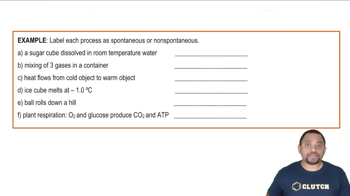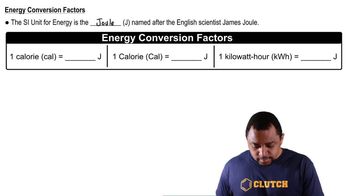Here are the essential concepts you must grasp in order to answer the question correctly.
Photosynthesis
Photosynthesis is the biochemical process by which green plants, algae, and some bacteria convert light energy into chemical energy, specifically glucose, using carbon dioxide and water. The overall reaction involves the absorption of sunlight, which drives the endothermic reaction that produces glucose (or sucrose) and oxygen. Understanding this process is crucial for calculating the energy involved in sucrose production.
Recommended video:
Spontaneity of Processes Example
Energy Conversion
Energy conversion refers to the transformation of energy from one form to another. In the context of photosynthesis, solar energy is converted into chemical energy stored in sucrose. This concept is essential for determining how much solar energy is required to produce a specific amount of sucrose, as it involves understanding the relationship between energy input and output in chemical reactions.
Recommended video:
Kilowatt and Energy Calculation
A kilowatt (kW) is a unit of power equivalent to 1,000 watts, where 1 watt is defined as 1 joule per second. To calculate the total energy supplied by the sun per square meter, one must convert the energy produced in kilojoules to kilowatts, taking into account the time frame over which the energy is produced. This conversion is vital for expressing energy in a standardized unit that reflects power output over time.
Recommended video:




